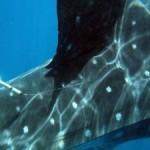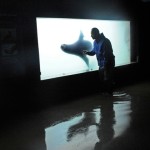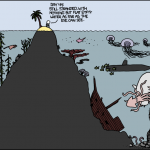
Apologies if I lost any of you post-Gen X readers with that Muppet Show homage title. But this space + ocean news is a clearcut case of science + technology = awesomesauce!
NASA’s Aquarius Project, a joint U.S./Argentinian Aquarius/Satélite de Aplicaciones Científicas (SAC)-D mission to map the salinity—the concentration of dissolved salt—at the ocean surface has produced its first global map. This is quite a milestone for all involved in the Aquarius mission and represents a new asset for the planetary/ocean science community as well as having implications for natural resource managers and legislators.
As described on the NASA Aquarius website,
By measuring ocean salinity from space, Aquarius will provide new insights into how the massive natural exchange of freshwater between the ocean, atmosphere and sea ice influences ocean circulation, weather and climate.
How does Aquarius measure ocean salinity from space? Ingeniously, it would seem, with technology you probably use in your own home to cook a bag of popcorn or reheat your coffee.
Using electro-magnetic (EM) frequencies near those used in microwave ovens, an Aquarius instrument called a radiometer “remotely senses” salinity in patches of ocean surface by beaming an EM signal from space towards a patch of seawater in order to measure the natural heat output from that patch. If you’ve ever used an infra-red thermometer to measure the temperature of your BBQ grill surface (or your baby’s forehead), it’s sort of the same principle only the beam is being transmitted from orbit miles above the ocean surface. Aquarius’s radiometer detects this signal from the ocean surface, which is a function of both salinity and temperature. Another Aquarius instrument corrects for any interference with the salinity signal from other sources (such as wave energy which can modify the true signal due to distortions as the EM beam passes through choppy water. Using what looks to me like magic but to NASA scientists is routine mathematical algorithms, this heat output can be nicely correlated to surface salinity.
Now repeat this thousands of times, on those days when cloud cover does not block instrument operation, across vast swaths of ocean real estate and you can assemble a relatively complete “map” like the one above that illustrates global sea surface salinity. I’ll be personally interested in seeing how much coastal variability (yearly/monthly, etc.) can be seen from Aquarius and how close to shore data can be retrieved.
So what can we do with this data? NASA explains,
Because ocean surface salinity varies from place to place and over time, scientists can use it to trace the ocean’s role in Earth’s water cycle. For example, more than 85 percent of global evaporation and more than 75 percent of global precipitation occur over the ocean. By measuring changes in ocean surface salinity caused by these processes, as well as by ice melting and river runoff, Aquarius/SAC-D will provide important new information about how Earth’s freshwater moves between the ocean and atmosphere and around the globe.
Knowing ocean surface salinity can also help scientists track ocean currents and better understand ocean circulation. Salinity, together with temperature, determines how dense and buoyant seawater is. This, in turn, drives how ocean waters are layered and mixed and the formation of water masses. Salinity also has a major effect on ocean circulation, including the flow of currents that move heat from the tropics to the poles.
The NASA Aquarius Project joins a suite of other equally awesome space-based remote sensing tools, such as the NOAA Coral Reef Watch Satellite Bleaching Alert System, that are helping to fill-in the blanks in our understanding of oceanographic processes and how this understanding can have reliable predictive power in informing resource management or policy decisions.






One Reply to “SALT FROM SPAAAAACE!”
Comments are closed.